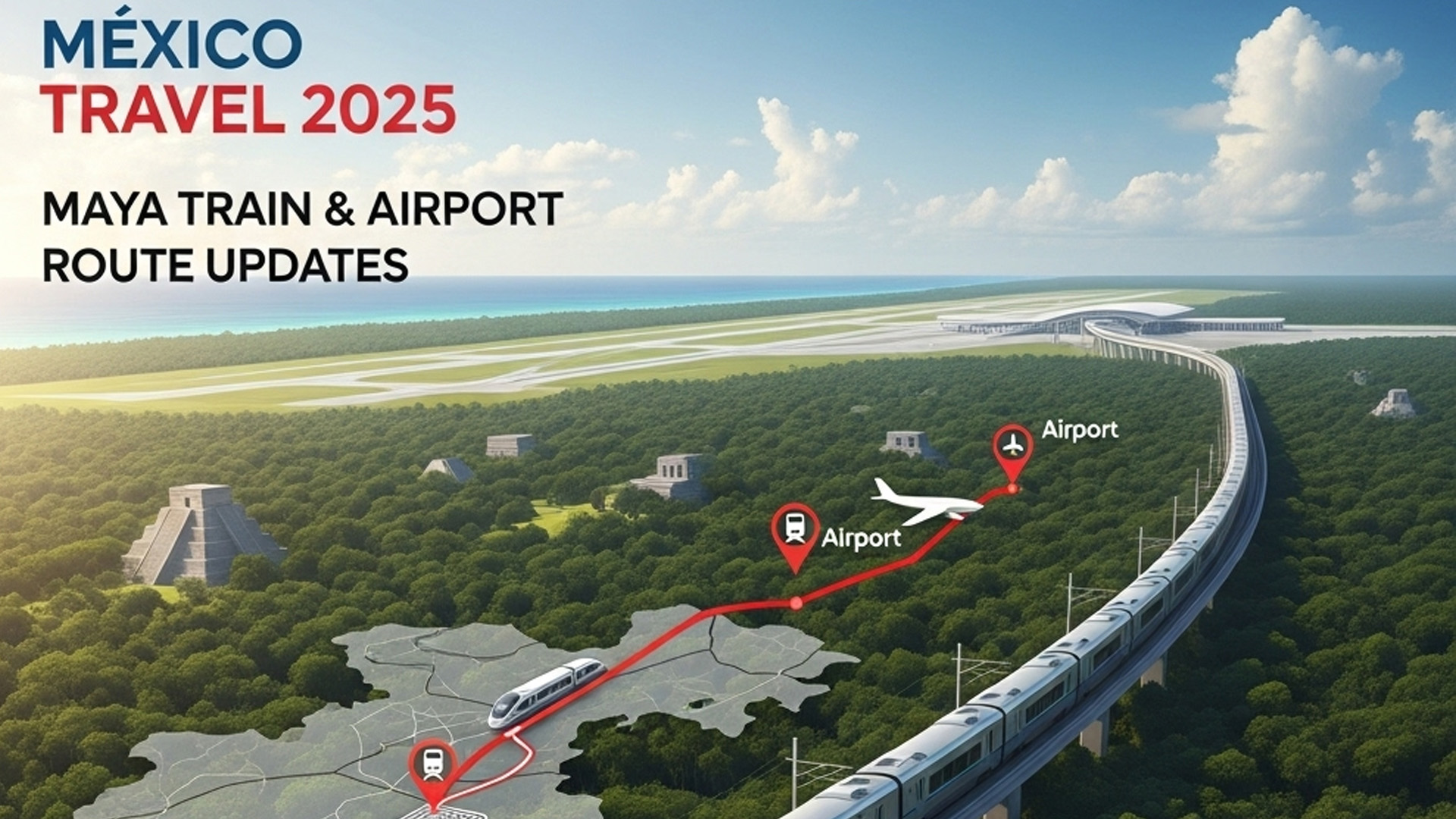The 2025 Travel & Transport Snapshot: What’s Open, What’s Next for Airport Routes and Maya Train Connectivity
As 2025 approaches, travelers, policymakers, and tourism professionals are turning their attention to Mexico’s rapidly transforming transport landscape. From the expanded capabilities of regional airports to the eagerly anticipated routes of the Maya Train (Tren Maya), a unified vision of connectivity, economic development, and sustainable tourism is being realized at lightning speed. In this article, we’ll give you an SEO-optimized, detailed breakdown of what will be open by 2025, what to watch out for in the next phase of development, and how the ongoing infrastructural upgrades are forecasted to impact each station and route.
Whether you’re a traveler planning your next adventure, a travel blogger scouting the latest trends, or a business professional investing in regional tourism, this comprehensive guide will give you a forward-facing view of what lies ahead.
Expansion of Regional Airport Routes in 2025
Mexico’s regional airports are experiencing rapid growth, with government investments fueling expansion to support both domestic and international tourism. As the number of passengers rises year over year, the strategic development of airport infrastructure is aligning with the goals of the broader Tren Maya initiative.
Key highlights for 2025 include:
- Cancún International Airport: New direct flights to South America and Europe, including routes to Bogotá, Madrid, and Rome.
- Mérida International Airport: Upgraded terminals and two new domestic routes connecting to Oaxaca and Chihuahua.
- Tulum’s Felipe Carrillo Puerto Airport: Full commercial operation with daily flights to Mexico City, Guadalajara, and Houston.
These expanded routes not only offer better convenience for travelers but also increase access to Tren Maya hubs, promoting an integrated air-rail network that supports regional economies and boosts local tourism.
Tren Maya’s Operational Segments by 2025
The Tren Maya project, one of Mexico’s most ambitious infrastructure undertakings, is scheduled to have nearly all its primary segments operational by mid-2025. The train ride, designed to bring sustainable transportation to the Yucatán Peninsula and connect major archaeological sites and natural reserves, spans 1,525 kilometers and traverses five states.
Operational Segments by 2025:
- Cancún – Tulum: Fully functional with 6 daily departures
- Palenque – Mérida: Open and functioning with both economy and luxury services
- Escárcega – Chetumal: Passenger testing completed; full service to begin Q2 2025
The Tren Maya aims to connect the Caribbean coast to the cultural heart of the Mayan world. Each station is planned to integrate local artisans, culinary experiences, and eco-friendly visitors’ centers, offering tourists a truly immersive experience.
Forecasted Impacts on Tren Maya Stations and Surrounding Regions
Understanding how the operational Tren Maya segments will influence the surrounding areas is essential for travelers and stakeholders. These stations are expected to drive development in previously underserved regions while maintaining sustainability goals.
Forecasted Impacts:
- Tulum Station: Projected to triple local tourism by end of 2025 with investments in eco-lodges and art markets
- Bacalar Station: Anticipated hotel boom, with luxury and boutique accommodations already under construction
- Valladolid Station: Tenfold increase in artisan market footfall, boosting local income and cultural preservation
- Campeche Station: Government-backed push for heritage site promotions expected to increase domestic travel significantly
These developments are designed to benefit both tourists and local economies. Proper planning and stakeholder involvement remain crucial to ensure sustainable benefits.
What to Expect Next: Key Future Developments and Challenges
While the infrastructure growth is promising, there are still challenges and upcoming milestones that will determine the long-term success and impact of Mexico’s integrated travel systems.
What’s Next:
- New Routes in 2026: Potential connections to Belize and Guatemala under early feasibility studies
- Electrification Projects: Plans to introduce hybrid-electric trains to reduce carbon emissions across some routes
- Smart Ticketing: A unified booking platform integrating air and rail travel for seamless transit scheduled for soft launch in Q4 2025
Potential Challenges:
- Environmental Concerns: Continued debate over wildlife disruption and ecosystem impact
- Community Displacement: Activists and NGOs demanding fair compensation and relocation plans for affected local communities
- Operational Delays: Weather and unforeseen logistical hurdles may affect the rollout schedules
These projections should guide travel advisors, policy influencers, and global tourists in anticipating what’s truly next for Mexico’s transport evolution.
Conclusion
As we look ahead to 2025, Mexico’s evolving transportation ecosystem promises a more connected, accessible, and enriching experience for both domestic and international travelers. The combined progress in airport expansions and Tren Maya rail connectivity represents a massive leap forward in regional integration, economic development, and sustainable tourism.
From Cancún to Campeche, each route and station stands as a symbol of Mexico’s renewed commitment to infrastructure and culture. While there are still challenges to address, the blueprint for the future is promising and constantly evolving.
Are you planning your 2025 travel itinerary or considering investing in tourism? Share your thoughts below and don’t forget to explore our related content on sustainable travel strategies and regional highlights of the Yucatán Peninsula.

